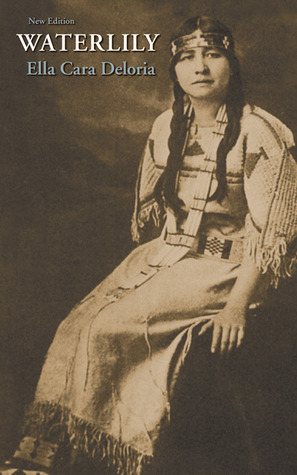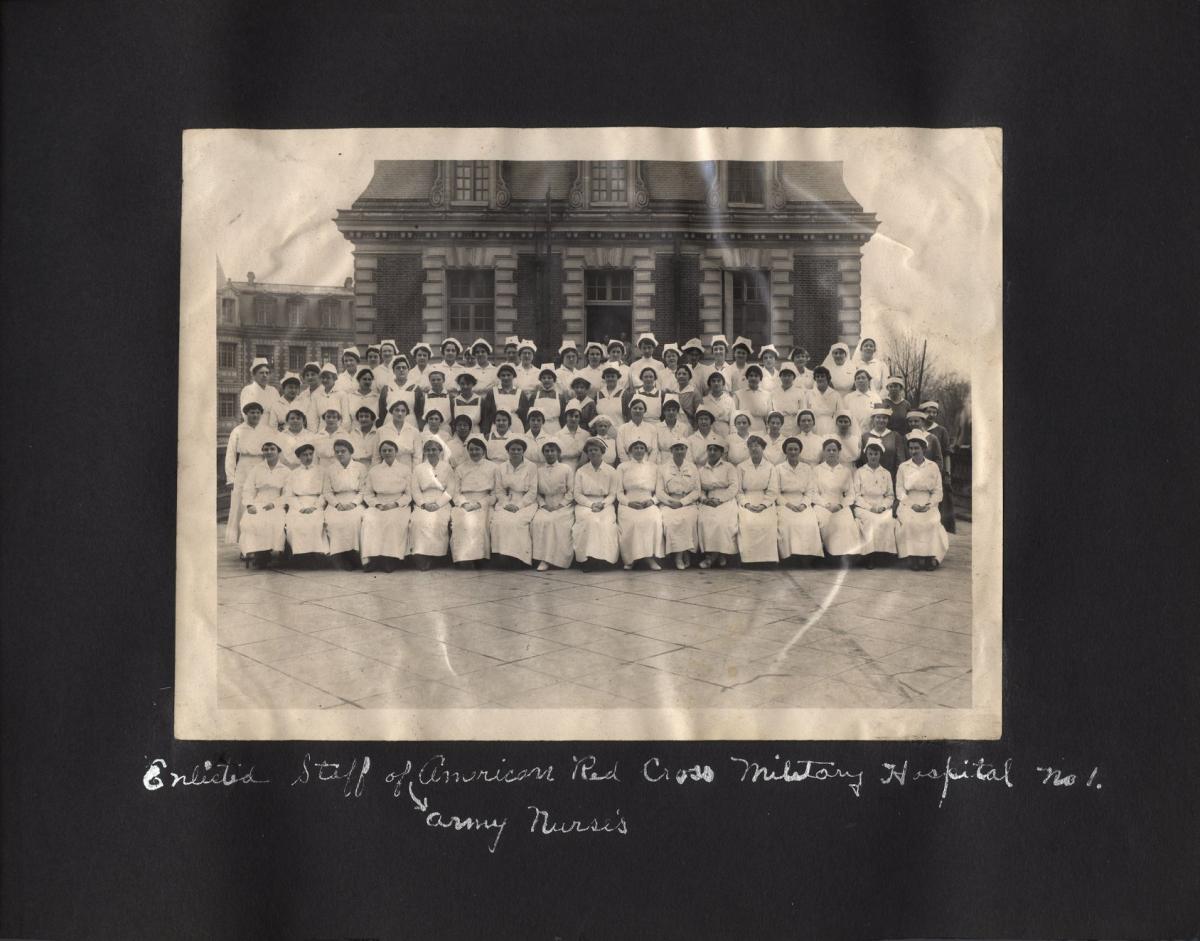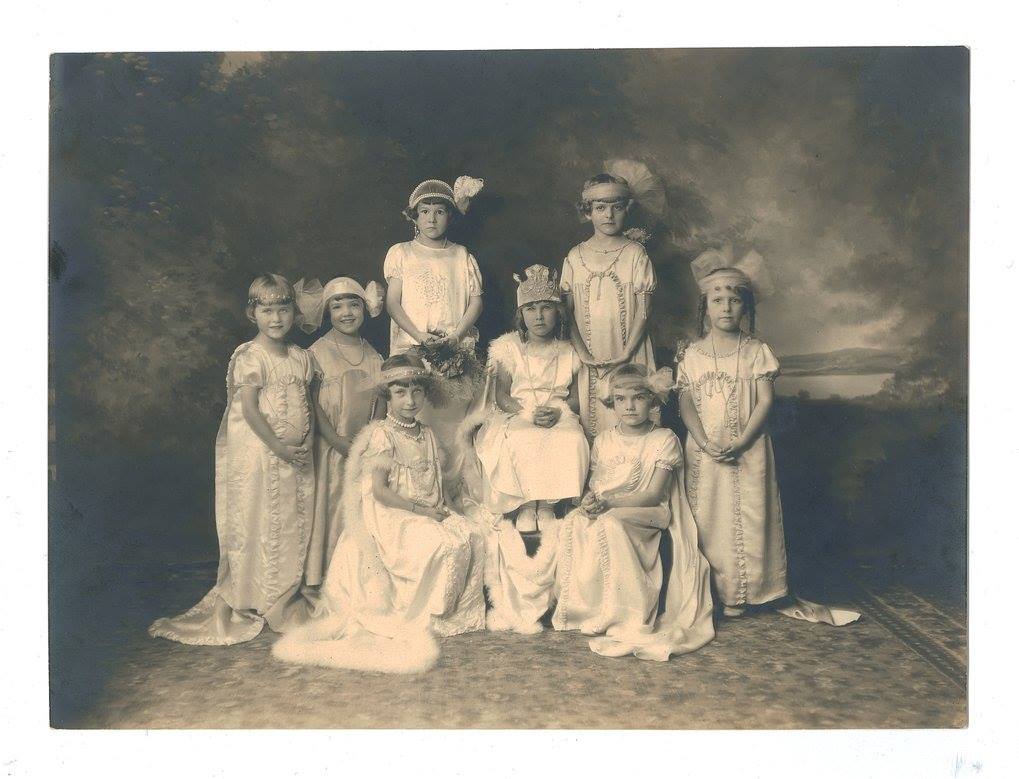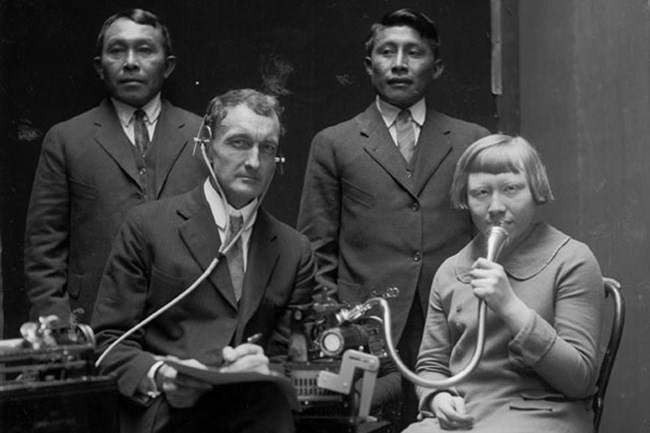
NHPRC News -- December 2018
Inside the Commission
Karen Finnegan Meyers Appointed to the Commission
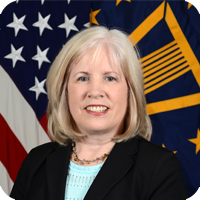 Ms. Karen Finnegan Meyers, director of the Executive Services Directorate, Washington Headquarters Service, has been appointed to the National Historical Publications and Records Commission, representing the Department of Defense.
Ms. Karen Finnegan Meyers, director of the Executive Services Directorate, Washington Headquarters Service, has been appointed to the National Historical Publications and Records Commission, representing the Department of Defense.
As Director of the Executive Services, Ms. Meyers leads the Directorate that provides knowledge management, information security and graphics services to the Office of the Secretary of Defense. Prior to her service at Defense, Ms. Meyers was Chief of the Programs and Policies Division in the Office of Information Programs and Services at the Department of State. She served as the first Deputy Director of the National Archives and Records Administration’s Office of Government Information Services, which Congress created in 2007 to offer mediation services to resolve disputes between Freedom of Information Act requesters and Federal agencies, and to review agencies’ FOIA policies and procedures. In this capacity, Ms. Meyers helped to define its role as the Federal FOIA Ombudsman. Ms. Meyers earned a Bachelor of Science degree in the Administration of Justice from The Pennsylvania State University and a Juris Doctorate from Temple University School of Law.
National Archives to Award $3.5 million for Historical Records Projects
Archivist of the United States David S. Ferriero will award 31 grants totaling $3,468,729 to projects in 26 states and the District of Columbia, pending appropriations of a final budget for FY 2019. The National Archives grants program is carried out with the advice and recommendations of the National Historical Publications and Records Commission at its November meeting. A complete list of grants is at http://www.archives.gov/nhprc/awards/awards-11-18.
Through its Access to Historical Records: Major Initiatives program to assist archives and historical records repositories collaborate and take on large-scale challenges, six projects were awarded:
- University of New Mexico to digitize and create metadata for 30,000 aerial photographs of the Grants Mineral Belt taken between 1934 and 1987 to make them available online;
- Dartmouth College to develop and deploy a suite of digital tools to use with oral history records, using the Dartmouth Vietnam Project interviews;
- Country Music Foundation to digitize collections to populate interactive learning apps and a website that explore the role of Nashville’s Music Row in American culture and history;
- Coastal Carolina University to digitize 6,900 pages of text, 90 hours of audio, and six hours of film from Gullah Geechee collections from the descendants of West and Central African people brought to the Sea Islands and coastal plains of the American South;
- University of Southern California to digitize 37,000 photographs from the Dick Whittington collection documenting Los Angeles from the 1930s through World War II;
- Standing Rock Sioux Tribe, in cooperation with six other archives, to create an online platform and make historical records in the Dakota/Lakota language available.
Publishing grants went to seven publishing projects: the papers of John Adams and the Adams Family, Eleanor Roosevelt, Presidential Recordings, Civil War Governors of Kentucky, the Notebooks of John Cotton Jr., and the Documentary History of the Ratification of the U.S. Constitution and Adoption of the Bill of Rights. Eighteen grants went to state historical records advisory boards to carry out their mission to strengthen the nation’s archival network.
New Archives Collaboratives to Assist Small, Underserved Communities
We are looking for applications from organizations that will make collections from small and under-represented archives more readily available for public discovery and use. The grant program will fund Archives Collaboratives to share best practices, tools, and techniques among partners; assess institutional strengths and opportunities; and develop plans and management structures for long-term sustainability and growth.
Applications for planning grants are due April 4, 2019. The collaboratives must consist of three or more organizations that may:
- be located within the same community, state, or geographic region
- be "virtual" or online collaboratives
- share affinities in the scope and subject matter of their collections
- have similar organizational missions
- serve similar types of user communities
More information on this new grant program to pilot Archives Collaboratives is available at https://www.archives.gov/nhprc/announcement/collaboratives
Grant Deadlines
Access to Historical Records: Major Initiatives FY 2020
This program has two phases. You must first submit a Preliminary Proposal, and successful applicants from the preliminary round will be invited to submit a Final Proposal
- Preliminary Proposals: January 17, 2019
- Final Deadline: July 11, 2019
Institutes for Historical Editing
- Draft (optional):: no later than January 17, 2019
- Final Deadline: February 21, 2019
Archives Collaboratives: Planning Grants
For projects to plan and develop a working collaborative designed to enhance the capacity of small and diverse organizations with historical records collections.
- Final Deadline: April 4, 2019
Digital Edition Publishing Cooperatives
- Draft Proposals: March 1, 2019
- Final Deadline: May 1, 2019
State Board Programming Grants
For projects that strengthen the nation’s archival network through activities undertaken by state historical records advisory boards.
Publishing Historical Records in Documentary Editions
For projects to publish documentary editions of historical records.
This program has two deadlines:
News from the Field
Remembering the Nurses from the Great War
The NHPRC has helped preserve those memories through a grant to digitize the records of the Women's Overseas Service League's oral history collection. Founded in 1921 by women who had served in World War I, WOSL initially existed as local units, but soon became a national organization. Michigan State University, in partnership with the University of Texas-San Antonio, processed and digitized 162 audio interviews with American women who served overseas during World War I, World War II, the Korean War, Vietnam War, and the Gulf War.
This is photograph from the U.S. National Library of Medicine of enlisted Army nurses at the American Red Cross Military Hospital #1 at Neuilly-sur-Seine, France. You can listen to an interview with one of the nurses, Alta May Andrews Sharp who talks about her service in the American Red Cross and the U.S. Army Nurse Corps during World War One.
Sharp says that she served in the Red Cross for two years at "Military Hospital No. 1" as chief nurse in ward 83, before finally volunteering for the Army. She talks about her basic training, learning to salute, the voyage to England in a convoy escorted by sub-chasers and battle ships, sleeping in her life jacket, and having lifeboat drills daily. She says that she was stationed in France and discusses her duties, her pay, her quarters, her gray chambray uniform with the "butcher’s apron," and being shelled by the huge German artillery gun known as "Big Bertha." Sharp says that the nurses were treated well but were prohibited from dating enlisted men and that the officers were only interested in French girls. When they learned of the Armistice she says that she and her friends traveled to Paris to celebrate "all day and night." Ends abruptly. Hear the interview at https://d.lib.msu.edu/wosl/112
Read more about the Women's Overseas Service League Oral History.
The Fairy Queen and Her Baby Court
Kansas Memory is a wonderful online resource for primary sources online from the Kansas Historical Society and local historical repositories across the state.
From 1911 to 1929, El Dorado, Butler County, Kansas celebrated kafir corn, imported from Africa, that proved an economic boom, and the community created the Kafir Corn Carnival to mark the triumph of the crop. It was a three-day event in Kansas's largest county. In addition to a Kafir Corn Queen, there was a children's version of the court.
The National Historical Publications and Records Commission awarded a grant to the Kansas State Historical Records Advisory Board, which in turn made a number of regrants throughout the state for local archives. One of the regrants went to the Kansas Oil Museum, which documents the history of agriculture and oil in Butler County, but has been largely inaccessible to the public except by appointment. This project made a portion of the collection available online through Kansas Memory at https://www.kansasmemory.org/locate.php?categories=11928-13685&.
Read more about the Kafir Corn Carnival.
The Harrington Papers
Back in the early days of the National Archives grants program, we were able to fund a number of projects at the Smithsonian (though now the law has changed and we do not fund projects at other Federal agencies).
One of the great collections we helped support was the John Peabody Harrington Papers. Peabody (1884–1961) was an American linguist and ethnologist who dedicated his life to recording the lives and languages of the Native American tribes in California whose cultures faded as their numbers dwindled. This is a comprehensive microfilm repository of more than 750,000 documents – the largest collection of anthropological field notes ever seen at the Smithsonian.
The papers include extensive information on tribal boundaries, local geography, folklore, ceremonies, music, ethnobiology, and material culture. The collection includes documentation on over 130 languages, many of which are now highly endangered or no longer actively spoken. J. P. Harrington carried out his research in much of North America during the first half of the 20th century. The majority of the collection represents ethnological and linguistic fieldwork in California and with Native people in the Southwest, Great Plains, and Alaska. J. P. Harrington’s research also extended into southern Mexico, across much of Canada, and along the eastern coast of the United States.
Go to the Finding Aid for more on this fantastic collection.
New Frederick Douglass Bio
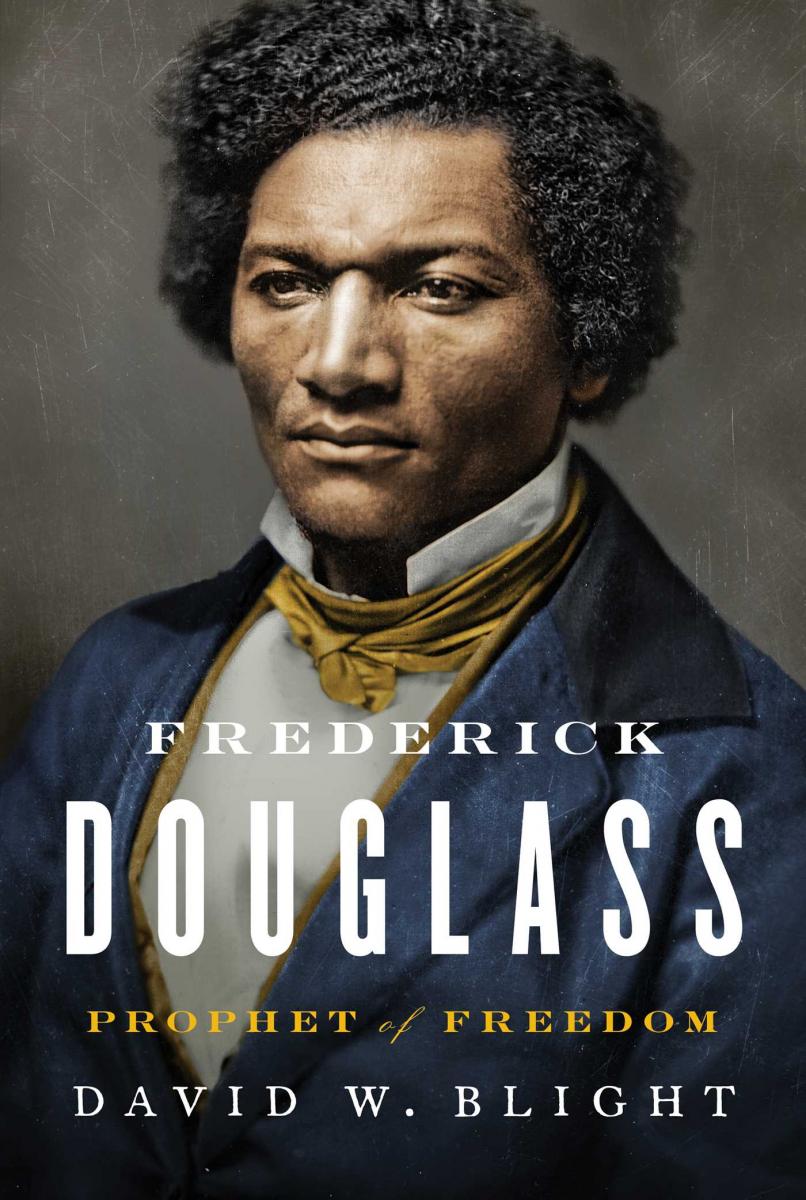 “No man can put a chain about the ankle of his fellow man without at last finding the other end fastened about his own neck.” -- Frederick Douglass, Proceedings of the Civil Rights Mass Meeting at Lincoln Hall, Washington, DC, October 22, 1883
“No man can put a chain about the ankle of his fellow man without at last finding the other end fastened about his own neck.” -- Frederick Douglass, Proceedings of the Civil Rights Mass Meeting at Lincoln Hall, Washington, DC, October 22, 1883
Named a NEW YORK TIMES and TIME "Top 10 Book of the Year," David Blight's biography of Frederick Douglass tells the gripping story of the escaped slave who became the greatest orator of his day and one of the leading abolitionists and writers of the era. Read more about this biography at https://www.simonandschuster.com/books/Frederick-Douglass/David-W-Blight/9781416590316
One of the resources that made Blight's book possible was the Frederick Douglass Papers Edition, which originated in 1973 at Yale University, as a result of consultations among the National Historical Publications and Records Commission, the Association for the Study of African American Life and History and John W. Blassingame, Professor of History at Yale.
For almost twenty years project was housed at Yale University, staffed by scholars at that institution. From 1992-98, West Virginia University housed the project, and now the Frederick Douglass Papers resides at Indiana University-Purdue University, Indianapolis (IUPUI). The NHPRC has supported this landmark project for decades.
To find out more, go to Frederick Douglas Papers project.
Clay, Calhoun, and Webster
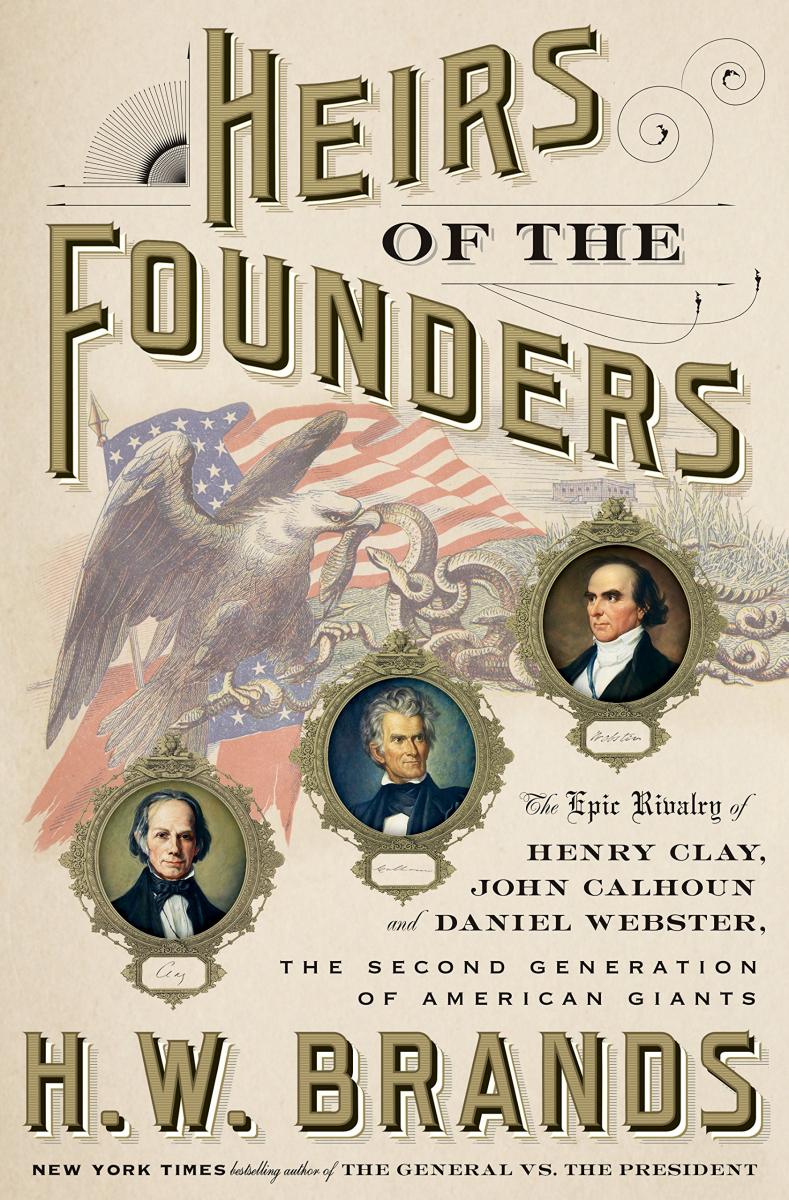 While the Founders of the United States rightly deserve our attention, there was a profoundly influential group of statesmen that inherited the new nation. H. W. Brands's new book, Heirs of the Founders: The Epic Rivalry of Henry Clay, John Calhoun and Daniel Webster, the Second Generation of American Giants of this new set of political giants who battled to complete the unfinished work of the Foundiers and decide the future of our democracy recently was published by Doubleday.
While the Founders of the United States rightly deserve our attention, there was a profoundly influential group of statesmen that inherited the new nation. H. W. Brands's new book, Heirs of the Founders: The Epic Rivalry of Henry Clay, John Calhoun and Daniel Webster, the Second Generation of American Giants of this new set of political giants who battled to complete the unfinished work of the Foundiers and decide the future of our democracy recently was published by Doubleday.
The National Archives, through the NHPRC, provided grant funds to three documentary editions of the papers of Clay, Calhoun, and Webster. Brands calls these editions "the primary-source backbone” of the book.
- The Papers of John Calhoun is a 28-volume edition published by the University of South Carolina press, and you can find more information at https://www.sc.edu/uscpress/books/1996/calhoun.html and https://catalog.hathitrust.org/Record/000319106
- The Papers of Henry Clay is a 10-volume edition (plus a supplement) published by the University of Kentucky Press, and you can find additional information at https://catalog.hathitrust.org/Record/000227566
- The Papers of Daniel Webster is a 15-volume edition published by Dartmouth College/University of New England Press and you can find more information at https://www.upne.com/series/PDW.html
A Letter to Santa, 1874
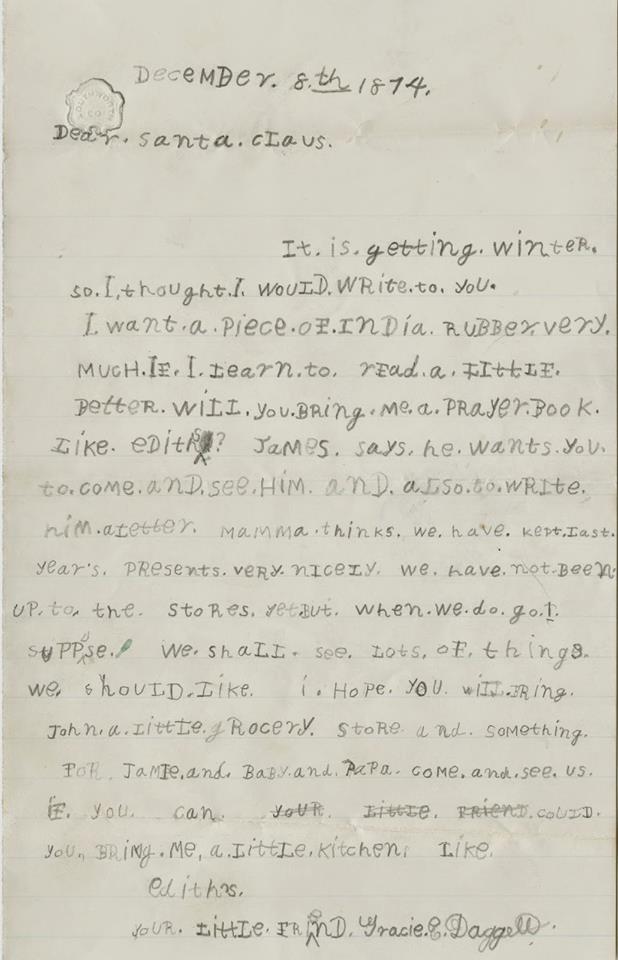 Perhaps one thinks of the old letters to Santa in an archives at the North Pole, but this gem resides in the Clements Library at the University of Michigan. As part of an NHPRC-supported project to process assorted manuscript collections, the Clements's Mary Jane Daggett family collection includes this 1874 letter from his "Little Friend" Gracie E. Daggett who would like a piece of India rubber, a prayer book, and a "little grocery store." Gracie's younger brother, John, also wrote a letter to Santa Claus, confessing to being "one of the naughtiest boys in town."
Perhaps one thinks of the old letters to Santa in an archives at the North Pole, but this gem resides in the Clements Library at the University of Michigan. As part of an NHPRC-supported project to process assorted manuscript collections, the Clements's Mary Jane Daggett family collection includes this 1874 letter from his "Little Friend" Gracie E. Daggett who would like a piece of India rubber, a prayer book, and a "little grocery store." Gracie's younger brother, John, also wrote a letter to Santa Claus, confessing to being "one of the naughtiest boys in town."
The NHPRC grant went to support a project to process 1,661 manuscript collections and photograph albums from the William L. Clements Library concerning 18th, 19th, and 20th century persons and events. Over two-thirds of these materials pertain to women, Native Americans, and African Americans.
You can read more about the Clements's Christmas-themed highlights at https://theclementslibrary.blogspot.com/2014/ and peruse the Finding Aid for the Mary Jane Daggett collection.
